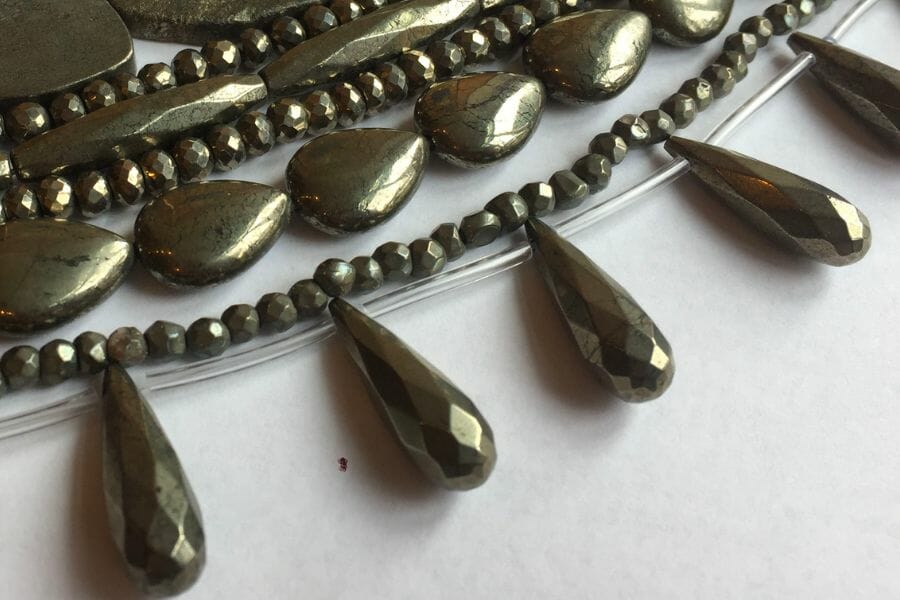Also known as “Fool’s Gold,” Pyrite has been capturing the attention of humans for centuries. While it may not be as valuable as its precious metal counterparts, it certainly has its own unique charm. It’s no surprise that this stone has made its way into the hearts of rock enthusiasts, jewelry makers, and even science geeks.
But don’t let its name fool you— Pyrite is anything but foolish! In fact, it has numerous practical uses, such as in the production of sulfuric acid and as a catalyst in the production of ammonia. Its metallic luster and golden hue also make it a popular addition to jewelry designs, and its appearance in nature can be a stunning sight.
If you want to know more about how much Pyrite is worth, read on because we’re about to dive deeper into its world.
What Pyrite Is
Pyrite is a shiny, metallic mineral that resembles gold, which earned it its nickname. Often found in sedimentary rocks, its cubic crystal structure gives it a distinctive geometric shape that can be mesmerizing to stare at. It’s also surprisingly heavy for its size, which makes it a fun addition to any rock collection.
On a lighter note, Pyrite is always fun to show off to your friends just to see if they can tell the difference between it and real gold. If you’re looking for a mineral that’s both beautiful and a little bit cheeky, Pyrite is your guy! But first, you must know just how much you might spend if you want to take home a piece of this treasure.
When it comes to Pyrite’s prices, the form it takes is the most important factor. Here are some more information on its different forms and its corresponding price tags.
Pyrite Specimens
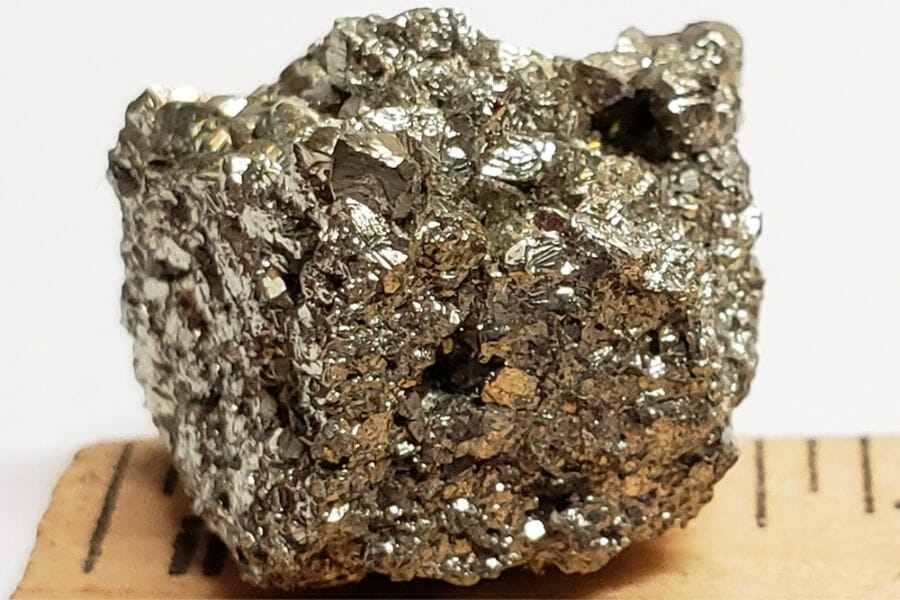
Pyrite specimens come in a variety of shapes and sizes, but they all share the same distinctive metallic luster and cubic crystal structure. Often found in sedimentary rocks, these minerals can be mined from different locations all around the world.
Pyrite specimens range in size: from small, thumbnail-sized pieces to large, fist-sized chunks. They can be perfectly formed cubes or have irregular, jagged edges. Some specimens may even contain multiple interlocking cubes, creating a larger, more complex structure.
In its natural state, Pyrite specimens are often used in rock collections or for scientific study.
How much are pyrite specimens worth
A Pyrite Specimen is very affordable, which is a good thing for something that really looks like gold. Its value is set at $0.15 to $0.85 per carat.
Pyrite Gemstones
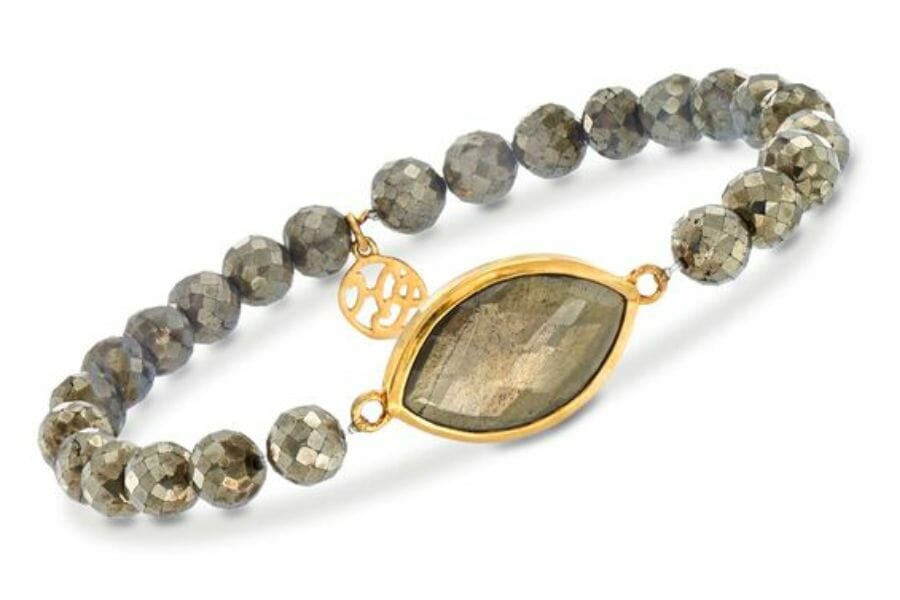
While Pyrite is not typically classified as a gemstone, it’s still a popular material for jewelry making due to its metallic luster and unique appearance. When cut and polished, it can be transformed into a stunning gemstone that resembles gold, but with its own distinct character.
Pyrite Gemstones can come in a variety of shapes and sizes, but they are most commonly cut into facets to maximize their reflective properties. And while they may not have the same value as other precious gems, they are still a unique and eye-catching addition to any jewelry collection. Their golden hue can complement both warm and cool skin tones, making them a versatile choice for any outfit.
How much are pyrite gemstones worth
Because of its unique luster, a Pyrite Gemstone sells at around $4 to $10 per carat, which is considerably pricier than the usual Pyrite Specimen.
Pyrite Cabochon
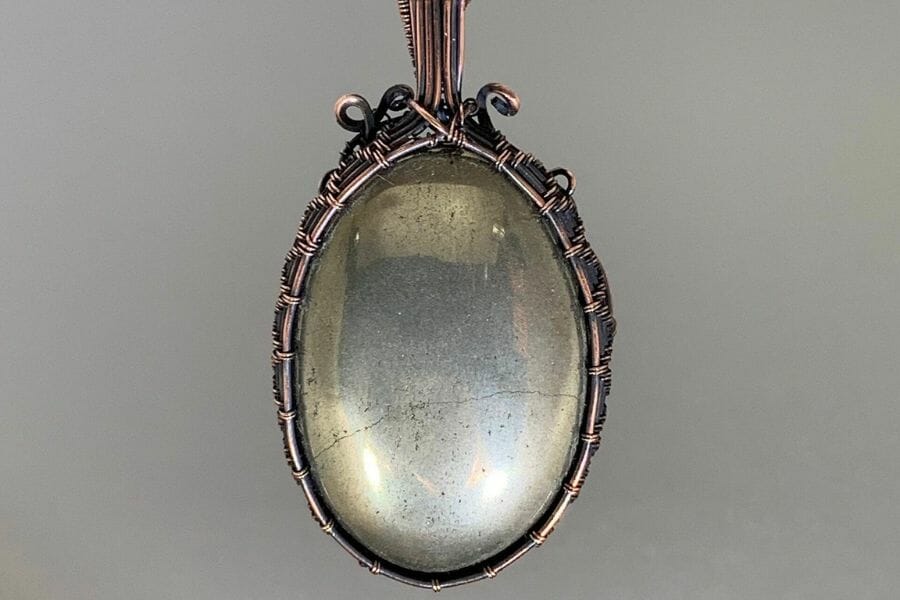
Cabochons are a popular form of Pyrite used in jewelry making. A cabochon is a gemstone that’s been shaped and polished into a smooth, convex shape with a flat bottom. Pyrite cabochons, in particular, showcase the unique metallic luster of the mineral and can resemble a golden, glittering dome when cut and polished.
Pyrite cabochons come in a variety of shapes and sizes, from oval to teardrop to round. They’re often used in jewelry settings, such as rings or pendants, where the smooth, rounded shape allows the stone to sit flush against the skin.
How much is pyrite cabochon worth
Pyrite Cabochon sells at the very affordable price of $0.50 to $2 per carat.
Rough Pyrite
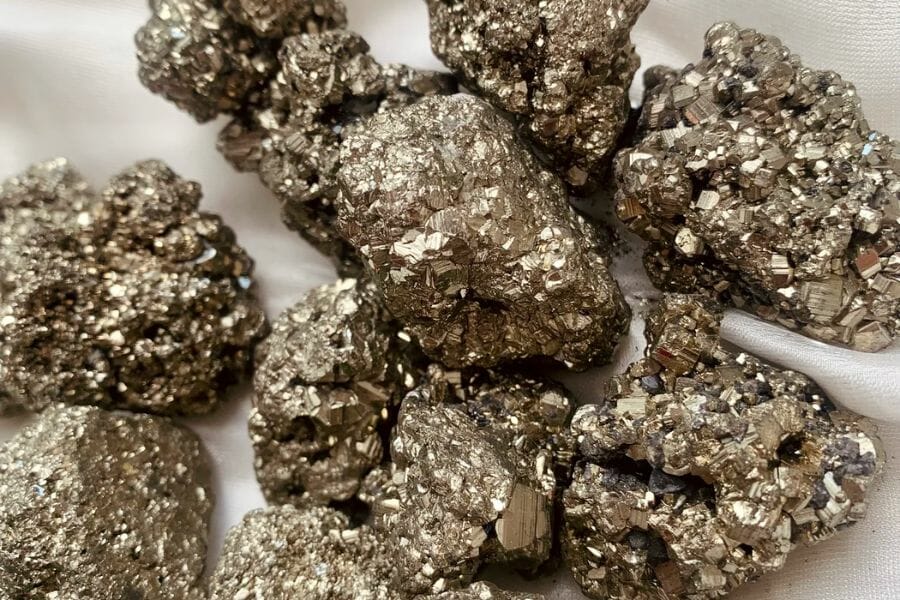
Rough Pyrite is the natural form of the mineral that’s found in its raw state in nature. These are unpolished, thereby retaining their natural, irregular shape.
Rough Pyrite can vary in size, with some specimens being small enough to fit in the palm of your hand and others being large, chunky pieces that require two hands to hold. They can also come in a variety of shapes, including cubes, octahedrons, and irregular, jagged shapes.
How much is rough pyrite worth
This form of Pyrite tends to be the cheapest at $0.02 to $0.08 per carat.
Why Pyrite Is So Expensive
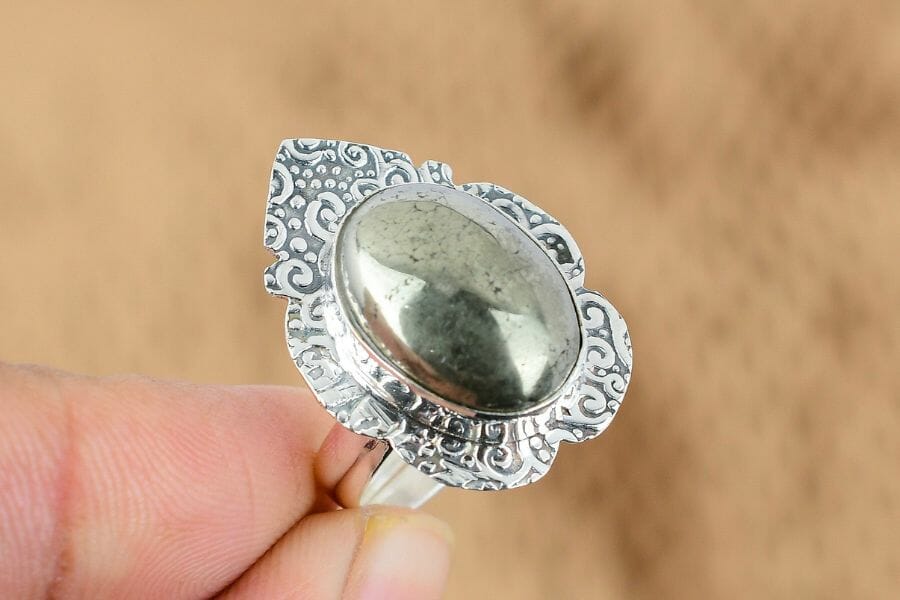
Pyrite has been valued for centuries, and it’s not hard to see why. With its distinctive metallic luster and golden color, it’s a truly unique mineral that has captured the imagination of collectors and jewelry makers.
One of the reasons Pyrite is so valued is its resemblance to gold. While it may not be as valuable, its metallic shine and golden hue make it a popular choice for jewelry makers looking to add a touch of glamour to their designs.
Another reason for Pyrite’s value is its rarity. While it can be found all over the world, high-quality specimens are relatively rare. This scarcity has driven up Pyrite’s price in recent years, making it a more expensive mineral than it once was.
But this mineral’s value goes beyond its appearance and scarcity. It also has a rich history and cultural significance. In ancient times, Pyrite was believed to have protective properties and was often used in amulets and talismans. It was also used in traditional Chinese medicine to treat a variety of ailments.
Today, it’s still valued for its perceived healing properties. Many believe that Pyrite can help with physical and emotional health, bringing a sense of grounding and stability to the wearer. This spiritual significance has only added to its allure and has helped to drive up its value in the modern age.
How To Determine The Value Of Pyrite
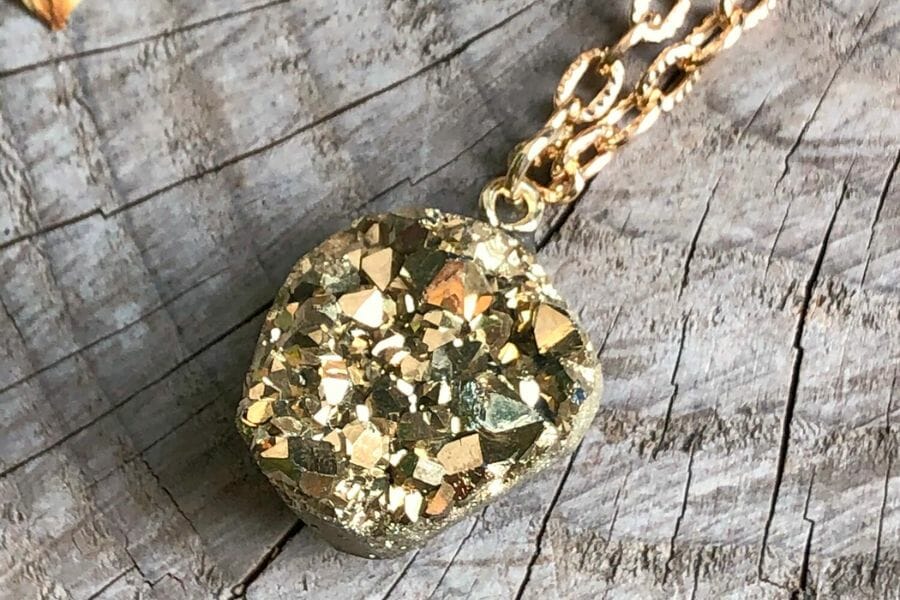
Pyrite is unique when it comes to the factors that affect its price, simply because the usual factors that influence the price of other crystals and mineral do not affect it. Instead, the following are the factors that determine a Pyrite’s value:
Crystal Habit
Crystal habit refers to the way that Pyrite crystals are arranged and formed, and it can have a significant impact on the appearance and overall value of the specimen. Certain crystal habits are considered more desirable than others and can command a higher price.
For example, Pyrite with a cubic crystal habit are highly sought after, as the symmetrical shape of the crystals is visually striking and makes for an attractive display piece. Other crystal habits, such as octahedral or dodecahedral, can also be desirable, depending on the quality and rarity of the specimen.
Form of Occurrence or Pseudomorph
Pyrite can occur in a variety of geological settings, and the manner in which it forms can affect the quality and rarity of the specimen. Samples that occur in well-formed crystals within a matrix of other minerals may be more valuable than those that occur as small, scattered grains. This is because the former is visually appealing and makes for an attractive display piece, while the latter is less impressive to look at and may be more difficult to extract.
Pseudomorphs are another factor that can impact the price of Pyrite specimens. These are formed when one mineral is replaced by another mineral over time, while retaining the original shape and form of the original mineral. Pyrite pseudomorphs are highly sought after by collectors, as they are relatively rare and visually interesting.
Origin or Source
Pyrite can be found in many different locations around the world, and samples from certain regions may be more desirable or valuable than those from other locations.
Specifically, Pyrite from the Huanzala Mine in Peru are highly sought after by collectors because they’re known for their large, well-formed crystals with a bright, golden luster. Similarly, Pyrite from the Navajún Mine in Spain is prized for its unique cubic crystal habit and deep, rich color.
Rarity
Certain types of Pyrite are rarer than others, and specimens that are hard to find or only occur in limited quantities can be more valuable than its more common supplies.
Size
Larger specimens of Pyrite will typically be more expensive than smaller ones, as they are rarer and require more effort to mine and extract.
Quality
Higher-quality Pyrite will have a brighter, more vivid color, and will be free of cracks, fractures, or other imperfections that can affect its appearance.
Pyrite Price By Form
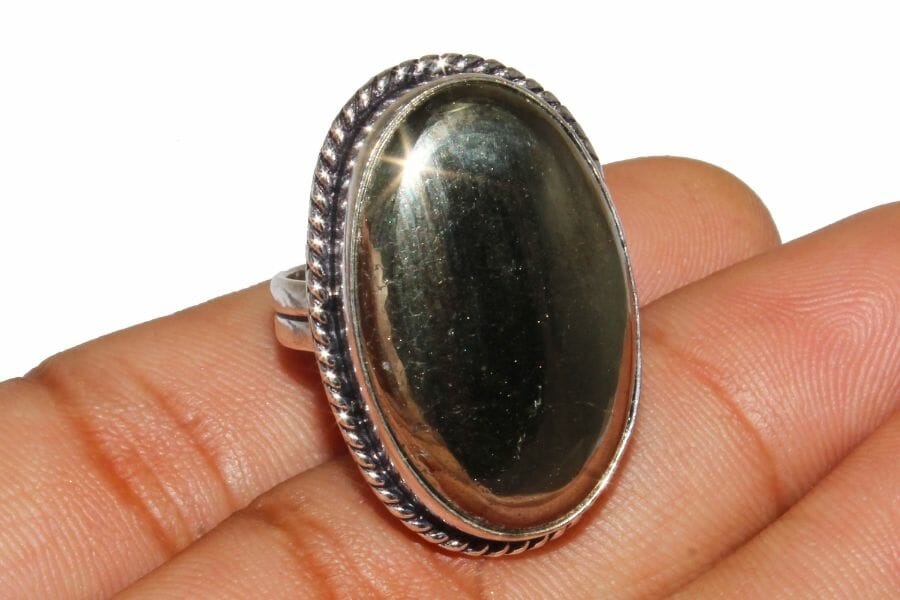
The factors we’ve discussed above greatly affect Pyrite’s price and value. In general, though, the price of this mineral is set depending on its form. Below is a table that contains its current price.
Pyrite values by form
| Form | Price (Per Carat) |
| Specimen | $0.15 – $0.85 |
| Gemstone | $4 – $10 |
| Cabochon | $0.50 – $2 |
| Rough | $0.02 – $0.08 |
As you can see, the form of the Pyrite immensely affects its value. To give you a clearer view of how much Pyrite is worth, we’ve calculated its price per different units of measurement.
Pyrite pricing by unit of measurement
| Measurement | Price |
| A carat of Pyrite | $0.15 to $10 |
| A gram of Pyrite | $1 to $50 |
| An ounce of Pyrite | $21 to $1,417 |
| A kilogram of Pyrite | $750 to $50,000 |
| A pound of Pyrite | $340 to $22,680 |
| A ton of Pyrite | $680,389 to $45,359,250 |
The Most Expensive Pyrite
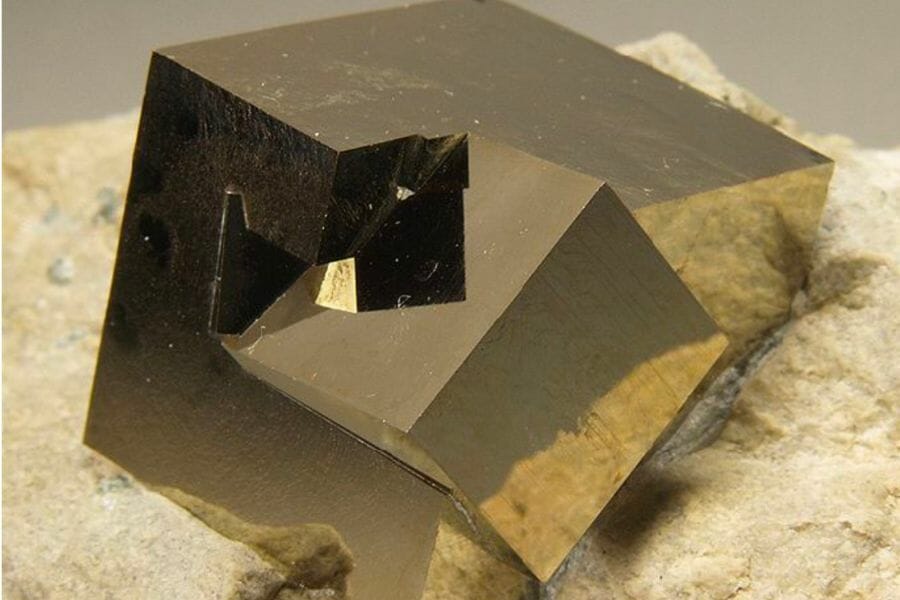
There is no record of Pyrite ever being sold for an exorbitant amount of money compared to other precious gemstones like diamonds, rubies, or emeralds. However, some Pyrite samples can still command a relatively high price in the market, especially those that are rare, of exceptional quality, or have historical significance.
One notable Pyrite that sold for a high price was a large, perfectly-formed cube from the Navajún Mine in Spain, which was sold for $150,000 in 2017. The cube measures 6.7cm on each edge and has a stunning, deep golden color and sharp edges. The specimen was highly sought after by collectors due to its rarity and the exceptional quality of its crystal habit.
While $150,000 is a significant amount of money, it is still relatively modest compared to the prices commanded by other precious gemstones. However, for collectors of minerals and Pyrite enthusiasts, this specimen is considered to be one of the finest examples of Pyrite ever found, making it an extremely valuable and prized addition to any collection.
How To Get An Appraisal On Your Pyrite
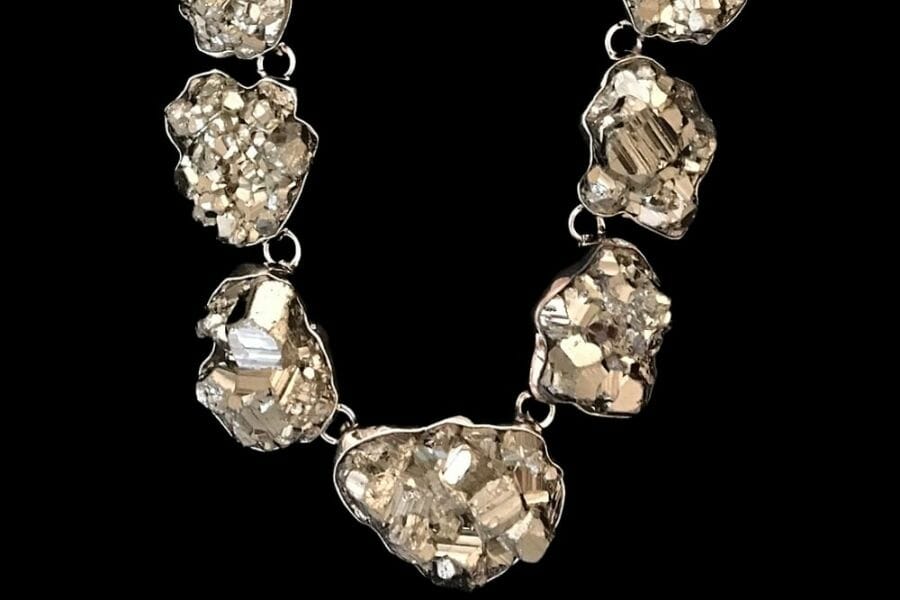
If you are looking to get an appraisal on your Pyrite, here are a few things you can do to ensure that you get an accurate and fair appraisal:
- Find a reputable appraiser: Look for an appraiser who specializes in minerals and gemstones, and who has a good reputation in the industry. You can ask for recommendations from other collectors, or look for appraisers who are accredited by professional organizations such as the Gemological Institute of America, Inc. (GIA) or the American Society of Appraisers.
- Provide detailed information: When you bring your Pyrite to the appraiser, be sure to provide as much information as possible, including the location where it was found, its size and weight, and any other relevant details. This will help the appraiser give you a more accurate appraisal.
- Consider getting multiple appraisals: If you are unsure about the value of your Pyrite, consider getting appraisals from multiple appraisers to get a range of estimates. This can help you get a better idea of the fair market value of your specimen.
- Keep your expectations realistic: While Pyrite can be valuable, it’s not as rare or expensive as other precious gemstones. Keep your expectations realistic and remember that the value of your Pyrite will depend on a variety of factors, as we’ve discussed here.
Overall, getting an appraisal on your Pyrite can be a useful way to determine its value and ensure that you’re getting a fair price if you decide to sell it. By following these recommendations and suggestions, you can find an appraiser you trust and get an accurate estimate of your Pyrite’s value.

